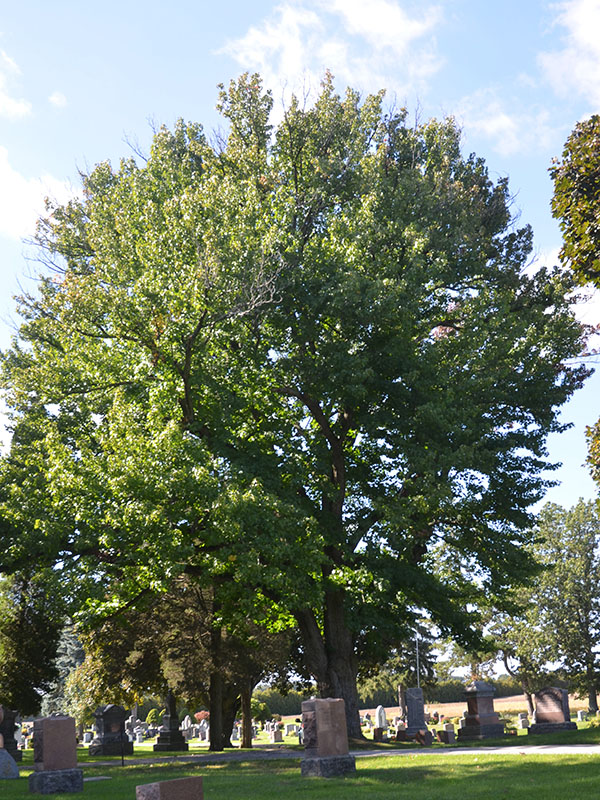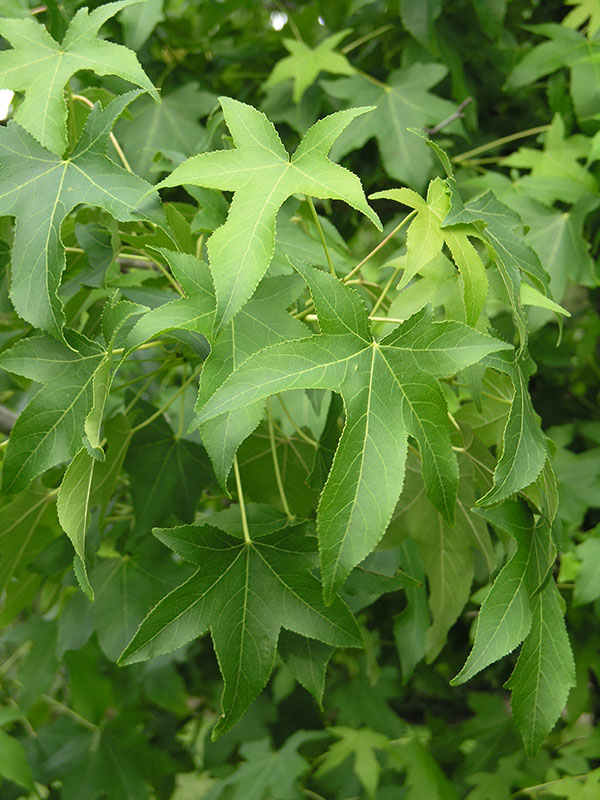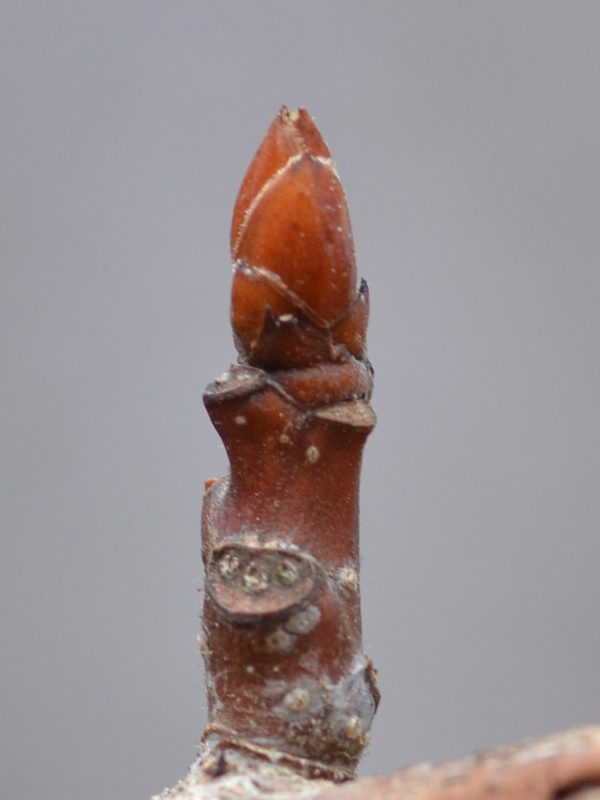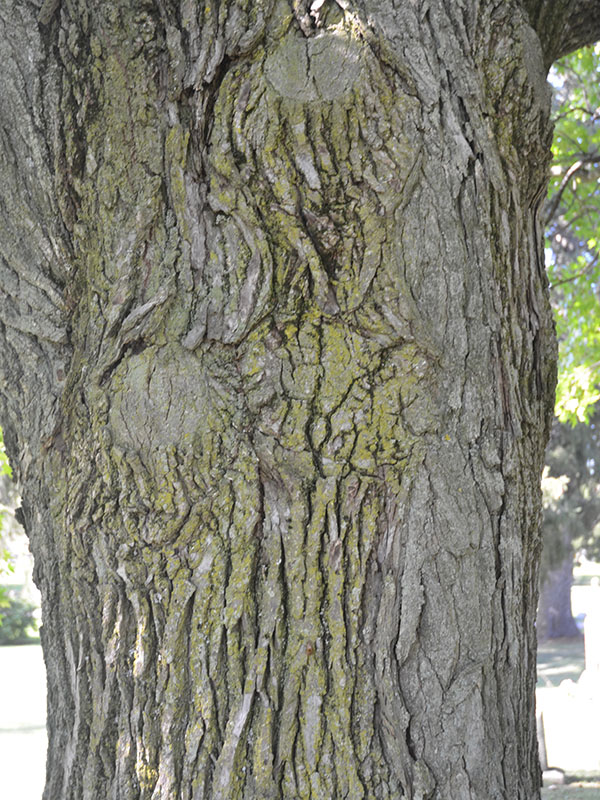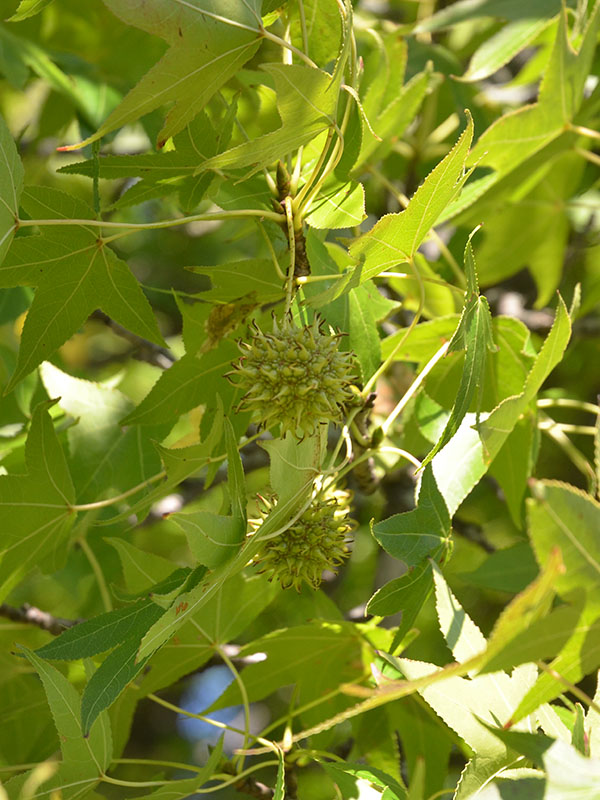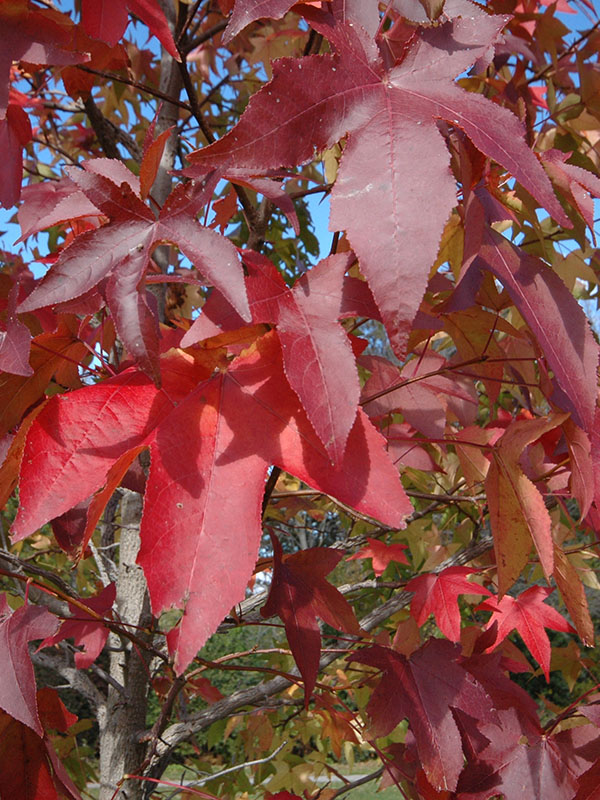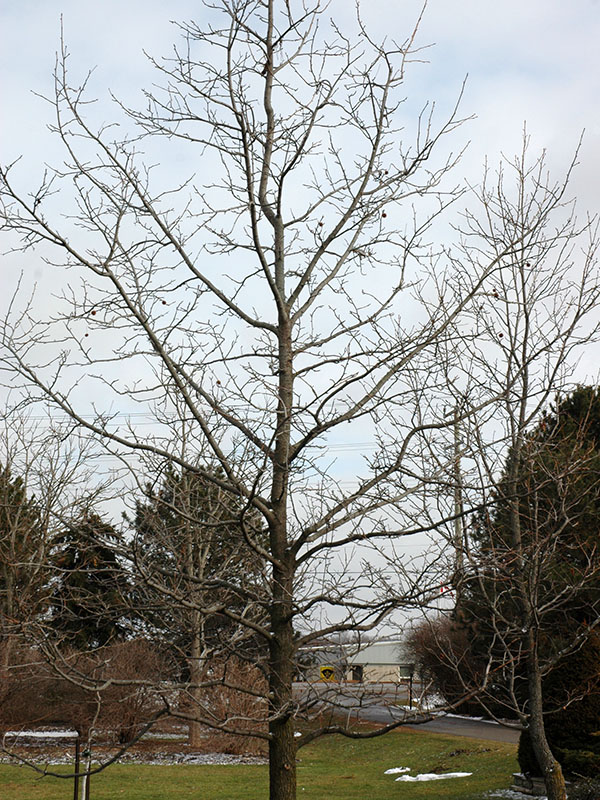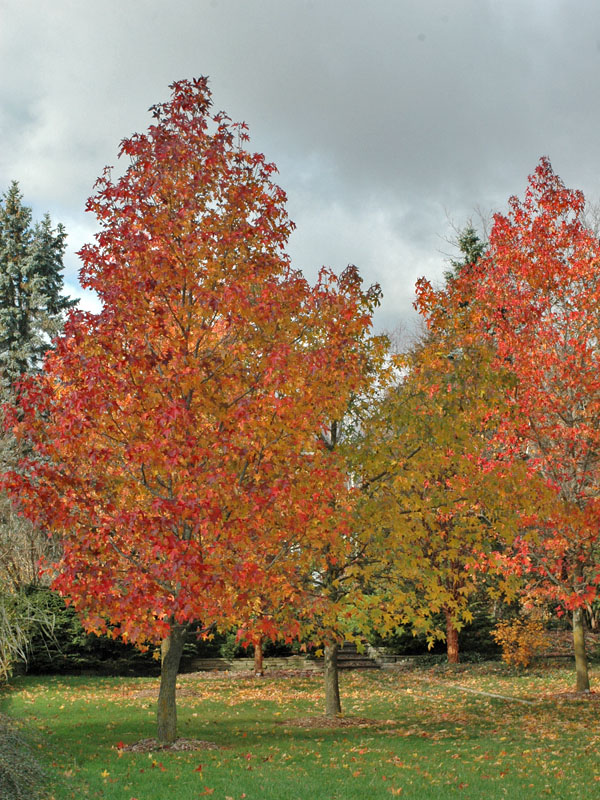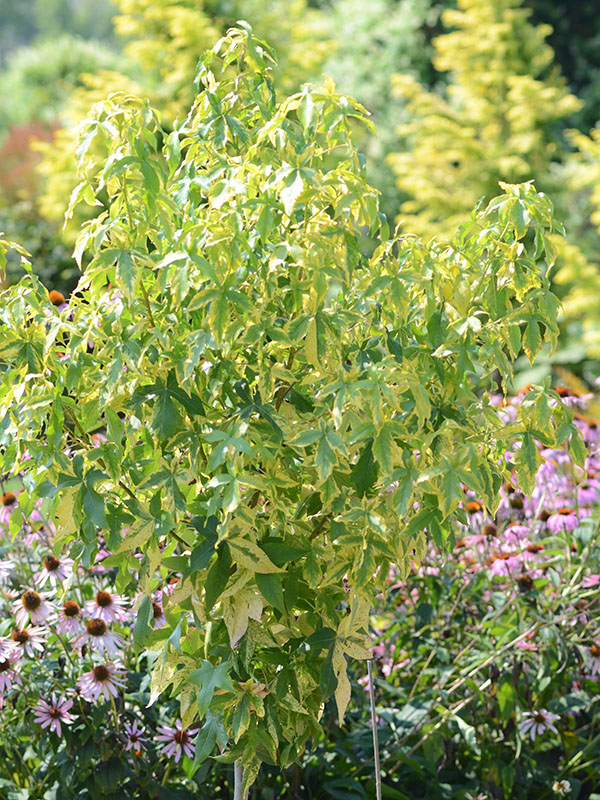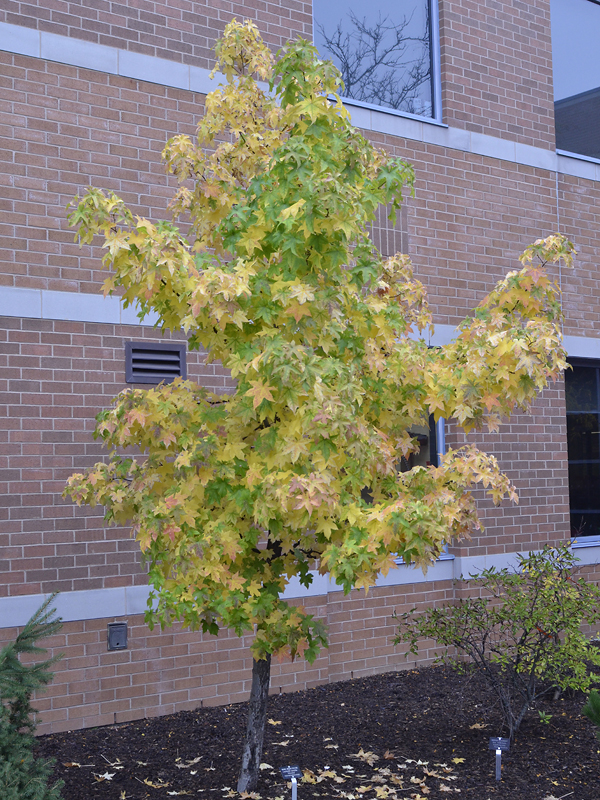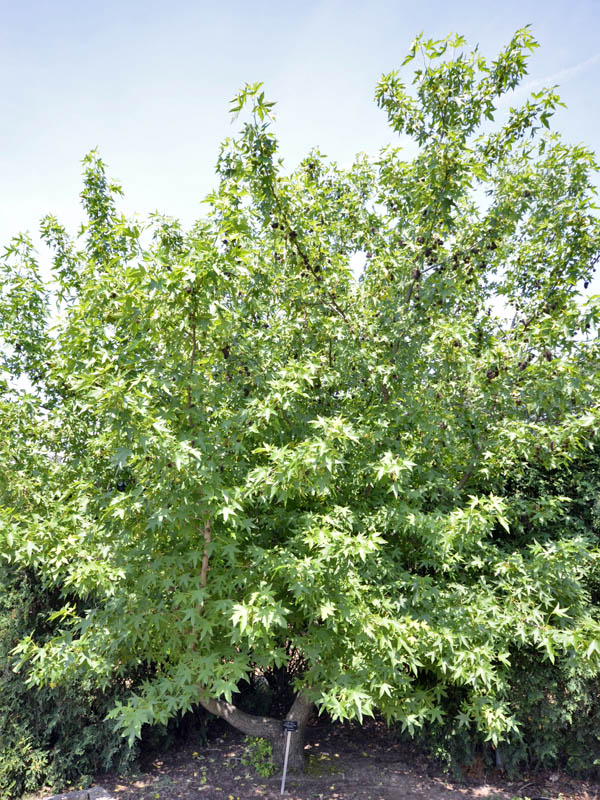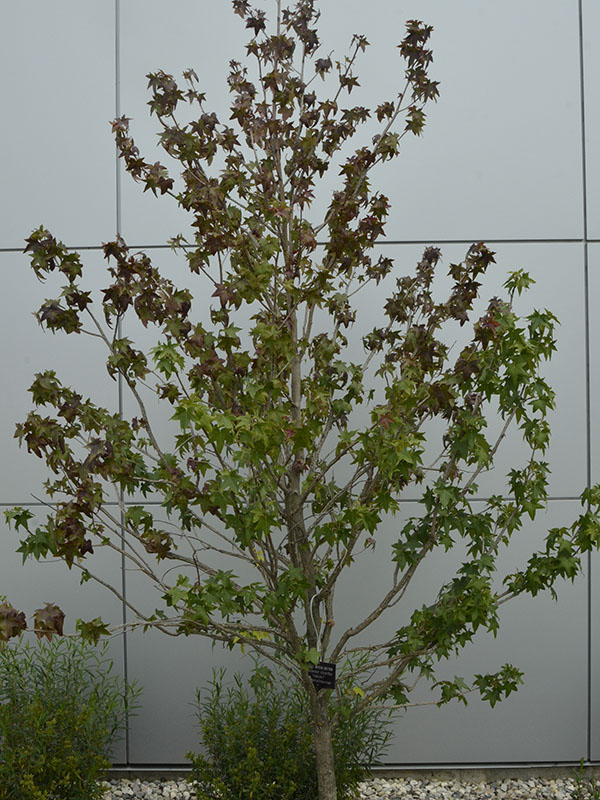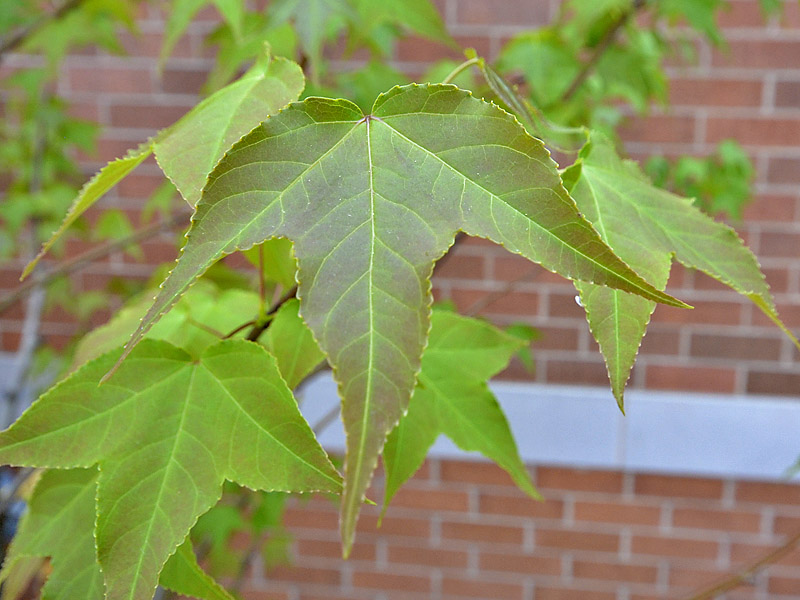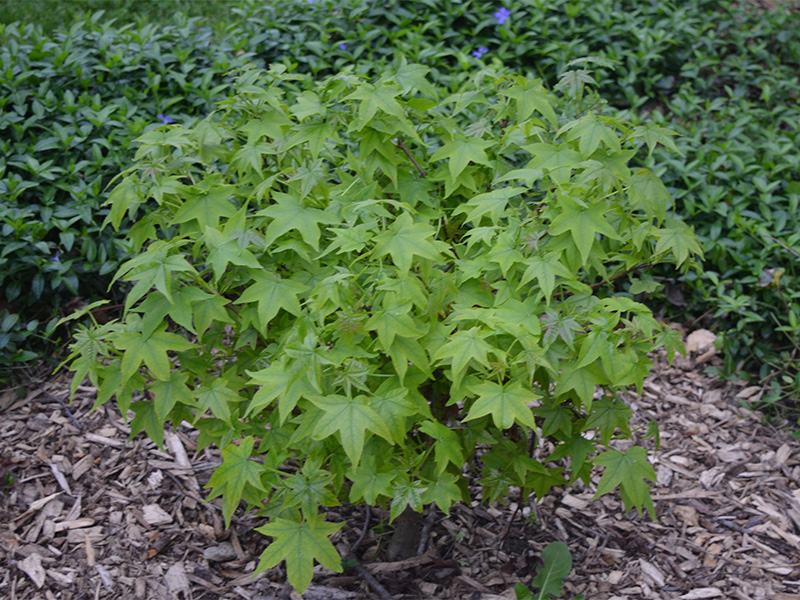| General Description | A very large tree that is pyramidal shape when young then rounded at maturity. The star shaped leaves give off a lime like smell when crushed and also have a wonderful autumn colour.
|
| ID Characteristic | Liquidambar styraciflua tree has star shaped leaf that is alternate, simple with pinnate venation and has spiked circular gum balls that are the fruit.
|
| Shape | Pyramidal in shape when young but becoming more rounded with age. |
| Landscape | It should be noted that this tree needs a lot of room for root development and can be very large at maturity, and thus is suited to large landscapes.
|
| Propagation | Seed can be sown in the autumn or spring after stratifying for 3 months in fertile moist well drained soil and areas of good light. Softwood cuttings in summer can be taken or it can propagated by air layering.
|
| Cultivation | Best cultivation practices are to transplant in spring and prune in winter. Liquidambar styraciflua prefers moist slightly acidic soil, roots are not fibrous so it takes time to establish.
|
| Pests | Bleeding necrosis, leaf spots, sweetgum webworm, caterpillars, cottony scale, sweetgum scale, walnut scale and iron chlorosis are some of the pest and diseases that can affect Liquidambar styraciflua.
|
| Notable Specimens | Port Dover Cemetery, Port Dover, Ontario, Canada. |
| Bark/Stem Description | Young twigs are a tan colour, with the bark becomes a greyish brown with deep ridges as the tree ages.
|
| Flower/Leaf Bud Description | The bud is Ovate or conical, 6-8 scaled, .5-1 cm long, reddish-green-brown colour and can be fragrant when crushed. |
| Leaf Description | Alternate star shaped leaves with a pinnate venation, about 10-17.5 cm high and wide, with 5-7 lobes, dark shiny green on top and a pale colour on underside.
|
| Flower Description | This tree is monoecious, the female found on a slender stock with a 1 cm diameter and males are found in an upright, 7.5-10 cm terminal. Both male and female are not showy and flowers appear in late April to May. |
| Fruit Description | A brown coloured synecarp, 2.5-3.5 cm in diameter with winged seeds. The fruit can become a hazard when it drops since it is quite prickly. |
| Colour Description | The leaves are shiny green during spring and summer turning yellow, purple or red in the autumn. The bark is grey and a lighter grey or tan when young. |
| Texture Description | The leaf is smooth on top with serrate edges, the bark is smooth at youth becoming very rigid with age. The fruit is spiked and can be prickly, the flowers on the other hand are smooth and often go unnoticed.
|
